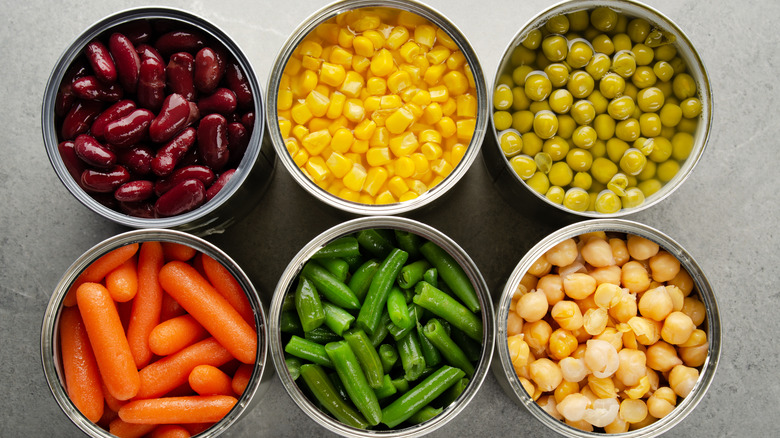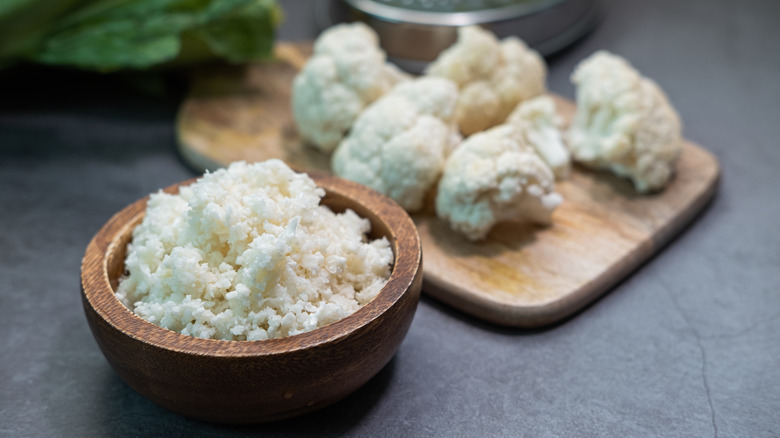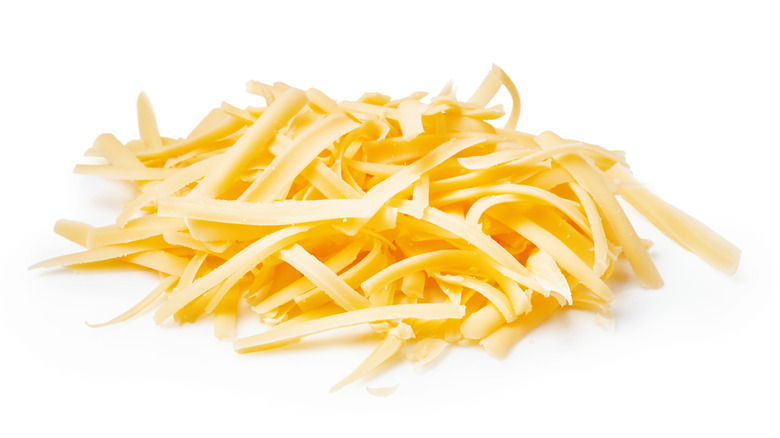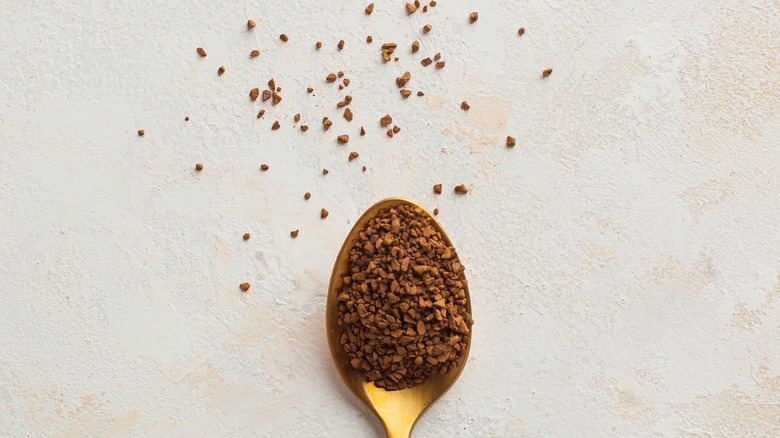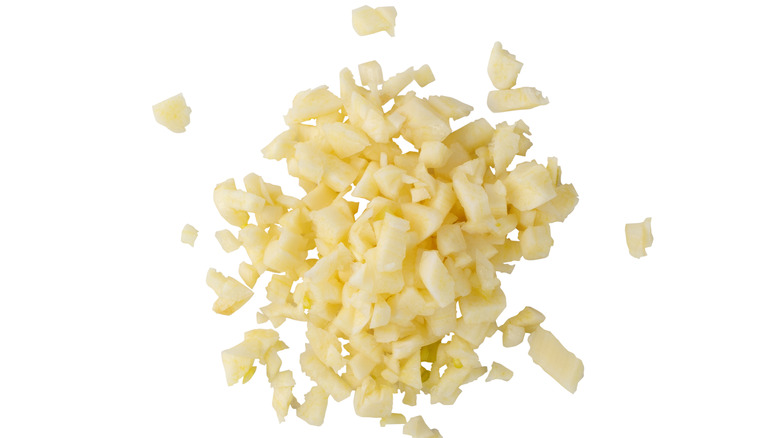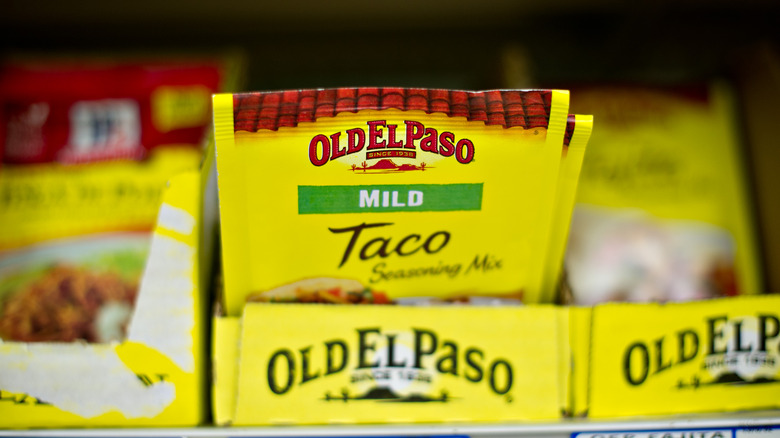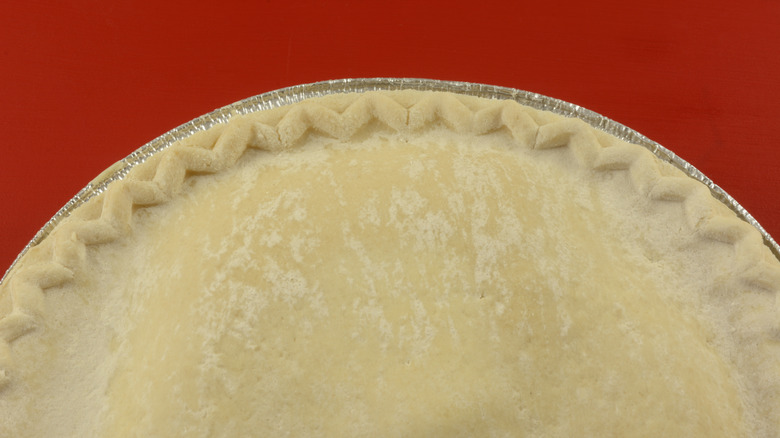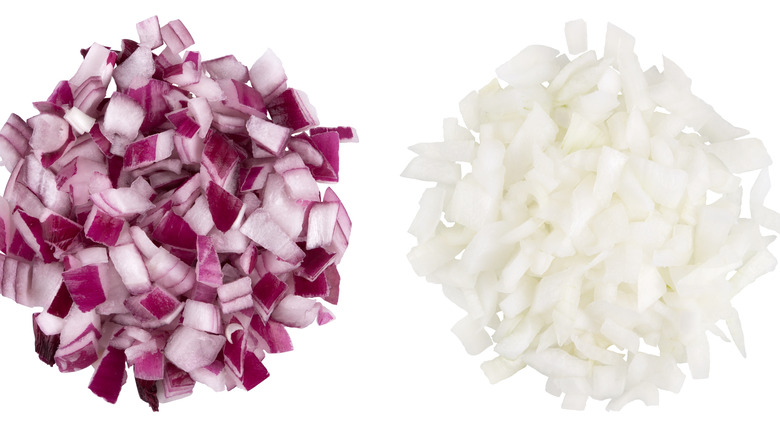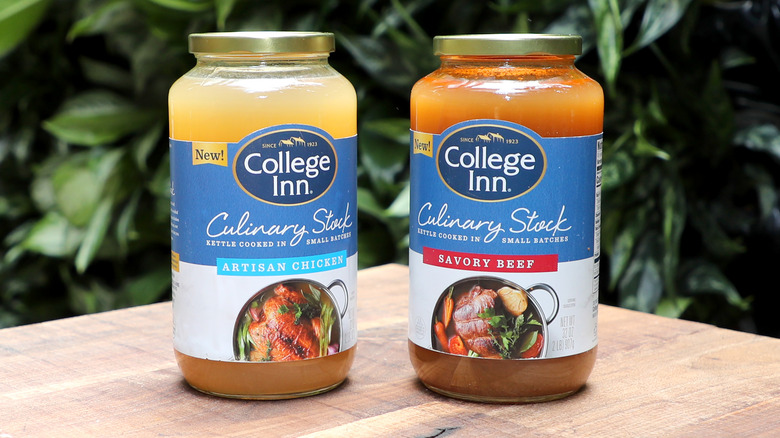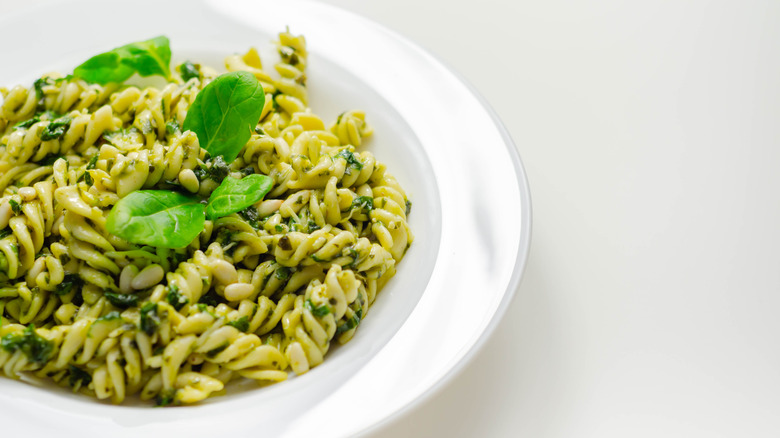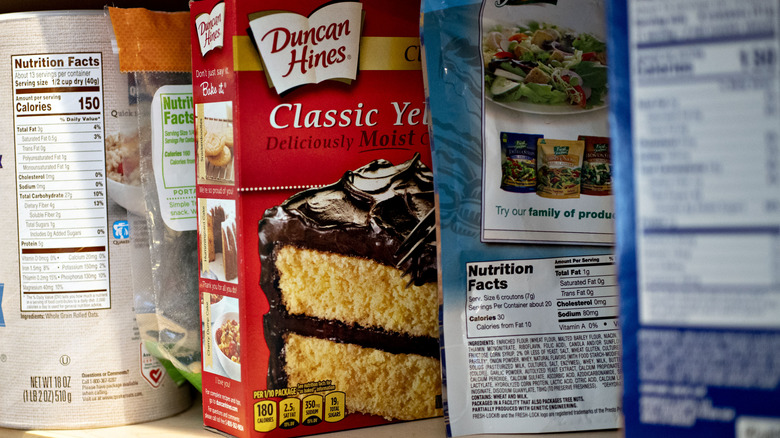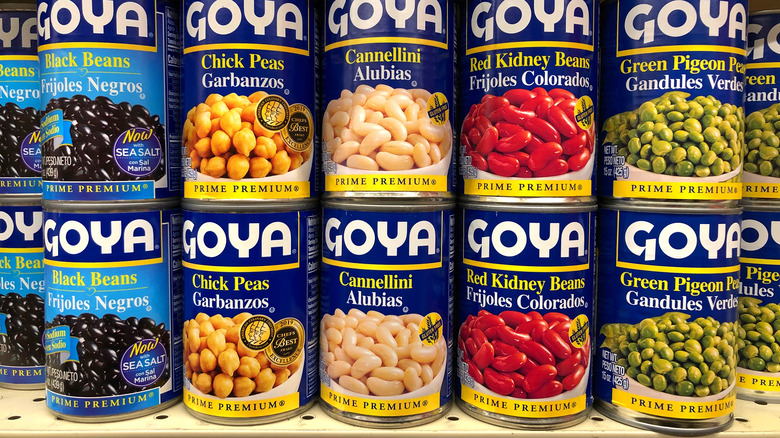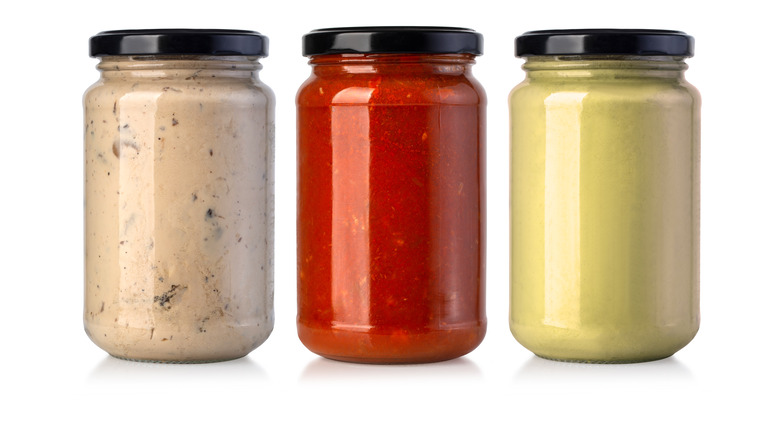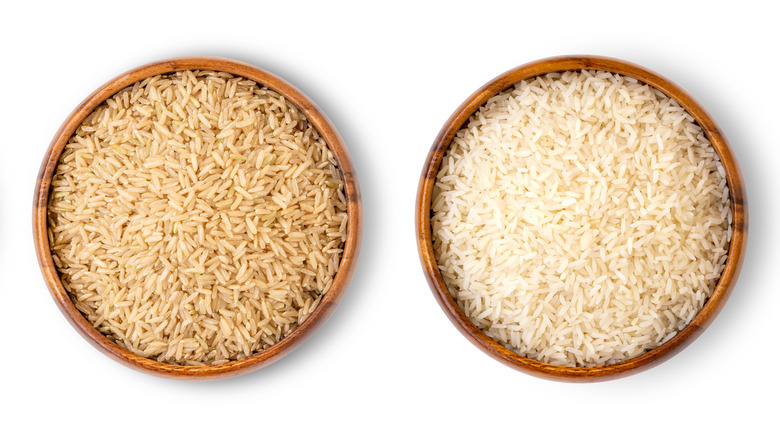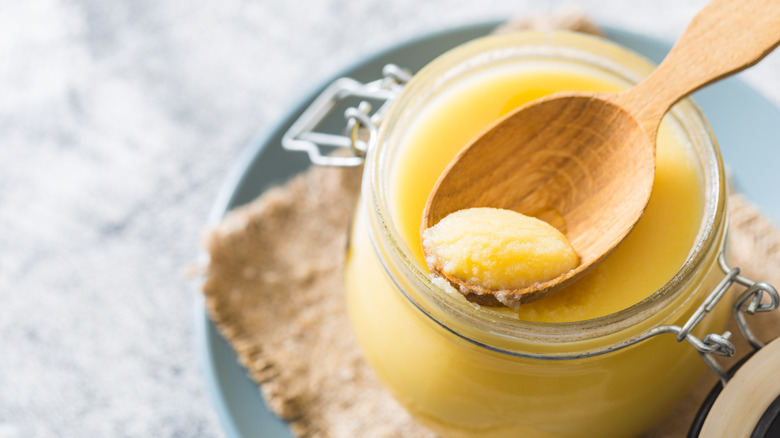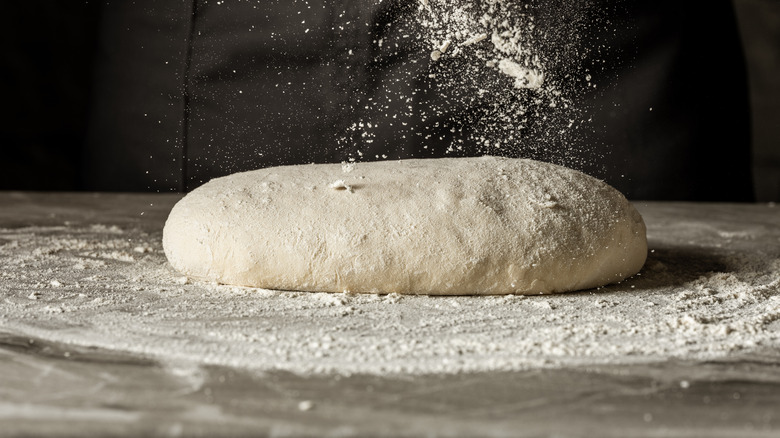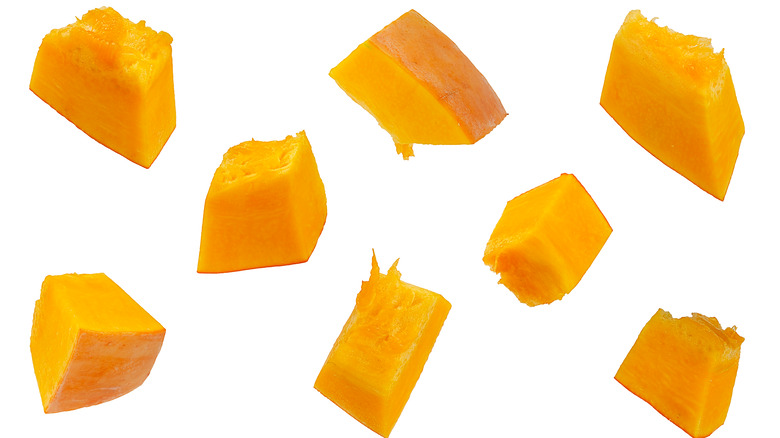Shortcut Ingredients You Should And Shouldn't Use
There's a reason why the expression goes: "the best thing since sliced bread." It seems we're constantly looking for ways to make cooking easier, with shortcuts ranging from condensed soup to frozen veggies and more. While some of these items can be your best friend in the kitchen, not all of these shortcuts are worth your money. Want to separate the wheat from the chaff? We've got you covered.
But before we begin, a quick but essential note: many convenience foods (including the pre-peeled oranges that made the rounds a few years back) play an important role in accessibility: these foods make it easier for people with disabilities or other barriers to cook, and we applaud that.
In this list, we explore the benefits and drawbacks — financial, environmental, and otherwise — of some common convenience foods. But we make no judgment calls on what you do with that information. On the contrary, we fully support those who seek out the shortcuts they need to make cooking a pleasurable and achievable experience.
Not worth it: riced cauliflower
Cauliflower rice has catapulted to fame in recent years as a low-carb alternative to one of the most widely consumed grains around the world. But while experts are divided on whether this trend is positive or negative (Chef Giada De Laurentiis told Christopher Kimball on his Milk Street podcast she "f*cking hate(s) it,") one thing is for sure: it's definitely not worth it to buy pre-riced cauliflower.
You always pay for convenience when it comes to prepared foods, but in the case of cauliflower rice, the markup is ridiculous. Roc Jurka of Pro Family Chef did the math, finding that homemade cauliflower rice can be up to 87% cheaper than store-bought, depending on the brand you choose. And that's not all ...
Fresh cauliflower rice tends to have bigger chunks among the rice-sized grains, and it also goes off more quickly according to The Cookful. Today, meanwhile, reports it has a blander, more watery flavor than homemade.
Both outlets note that frozen cauli-rice performs better than the pre-packaged stuff you find in the produce aisle, so if grating or processing your own cauliflower really feels like too much work, we can get behind this shortcut. But given the price discrepancy and ease of making your own ... why would you?
Not worth it: pre-grated cheese
Pre-grated cheese is one example of a convenience food that's not just more expensive than doing it yourself — it actually leads you to pay more for lowered quality. Due to the moisture and fat in cheese, when it's grated, it tends to stick together. While this is totally natural, manufacturers assume that when you reach for the pre-shredded cheese in the fridge, you want it to sprinkle, not clump. So they add anti-caking agents to it, including plant-based cellulose.
While there's nothing innately bad about cellulose (and Snopes debunked 2016 rumors that it was actually wood pulp), it's still not really something you want in your cheese ... especially not if you want it to melt easily. After all, additives keeping the cheese from congealing when cold may also prevent it from amalgamating when warm, such as when you want it to melt into a luscious carbonara sauce, as Cucina by Elena explains. Moral of the story? Get familiar with your box grater: it'll save you money and make for a better final result.
Not worth it: instant coffee
Look, we get it. Instant coffee is indeed a whole lot cheaper than brewed coffee, with Eleven Coffees showing that the average price of a cup of instant is a whole 30 cents cheaper than a cup of brewed. For someone who drinks a lot of coffee, that means instant could make a whole lot of cents sense.
But despite the cost analysis, coffee addicts opting for instant may end up sinking a whole lot of money into their choice, seeing as it's less caffeinated than the real thing. According to Healthline, a cup of instant contains between 30 and 90 mg of caffeine as compared to the 70 to 140 in a cup of regular coffee, so you need to drink more for the same buzz.
Instant coffee also boasts more acrylamide than regular coffee — and that's not a good thing. Acrylamide is a chemical formed when coffee beans are roasted and have been linked to a possible increased cancer risk. Plus, let's be honest: brewed coffee is just tastier, whether drunk on its own or used as an ingredient in your fave tiramisu recipe.
Not worth it: pre-minced garlic
Mincing garlic can leave your hands stinky and your cutting board messy, so we totally get why you might be tempted to opt for that stuff in a jar. But please, please resist the urge. Not only are the incredible health benefits of garlic far more easily reaped by the body when delivered in fresh form, according to the experts at Northwestern University, but jarred garlic far more subdued, muted, and even staler in flavor than the fresh stuff.
This is because garlic's flavor is extremely mutable, becoming more bitter the longer it sits around with its cell walls broken (i.e., pre-minced). And since jars of minced garlic also contain stabilizers and preservatives like citric and phosphoric acid, the pre-minced stuff just doesn't quite taste like itself. So eschew the jarred stuff and opt instead to pestle, grate, or mince your garlic yourself. It takes a bit more time and effort, but your garlic bread will thank you.
Not worth it: seasoning packets
From taco seasoning to grill seasoning, spice packets might seem like a life-saver. After all, when you compare them to a jar of actual spices, these $.99 packets come off as a steal. But all is not as it seems.
Building a well-stocked spice cupboard is certainly an investment at first, but you can reap the rewards for months to come. One seasoning packet can only be used for one meal, and that can quickly add up to a lot of $.99 purchases!
According to Money Saving Mom, that's not the only reason to opt-out of spice packets. She notes that making your own blends allows you to control the amount of salt and sugar in your recipes — not to mention eschew preservatives. Plus, it gives you full control of your flavor combos!
We will, however, acknowledge two caveats: if you don't use spices very often, go ahead and buy a packet. Spices in jars last about a year or two, according to McCormick, after which they begin to lose their potency. If you're only using spices very rarely, it's likely that a lot of spice will go to waste. Also, as Life Savvy explains, there are some blends that require so many ingredients — such as curry powder or Old Bay — that buying them pre-mixed is less of a headache and will likely also be a far more economic choice at the end of the day.
Not worth it: pie crust
Despite the expression "easy as pie," making pie crust is no simple feat to get just right. We can understand why a lot of people opt for the pre-made stuff, and with so many brands to choose from, surely one must be worth it? Not according to the experts.
For Macheesmo, the most advantageous shortcut is also the most expensive and the least desirable: Frozen pie crust saves you loads of time but costs nearly double the price of homemade or refrigerated prepared crust. And the taste just ... isn't there
Testers at The Kitchn, meanwhile, found that despite the slight time advantage and comparable price of store-bought, the flavor and texture of homemade are unmatched. With practice, an experienced pie-maker can turn out a crust in just 20 minutes of active time. And while there are now crusts made without hydrogenated fats, nothing beats the simplicity of flour, salt, sugar, and your choice of butter or lard, depending on the context.
Verdict? Arm yourself with a food processor and start practicing: there's no time like the present to perfect your homemade pie crust recipe.
Not worth it: pre-chopped onions
Vice pulls no punches with the title of its article about pre-chopped produce: "Chopped Produce is a Waste of Money So Stop Buying It Already." And while we don't agree on all counts (more on that later), we do concede that pre-chopped onions are kind of a waste.
Like garlic, onions are a member of the allium family. And like garlic, onions begin to release bitter compounds the moment their cell walls are broken. The acrid flavor of these compounds only increases with time, so the longer your chopped onions are sitting out before being used, the less sweetness and more bitterness they will impart into your final dish.
If your knife skills aren't super honed (ha, ha) — or chopping onions just makes you teary — simply use a food processor or learn to chop onions the right way. Money saved, onions chopped, problem solved.
Worth it: rotisserie chicken
Store-bought rotisserie chicken is a game-changer when you need to get supper on the table quickly — and depending on where you get it from, it's a total steal. Costco is famous for its $4.99 pre-cooked rotisserie chicken that's so cheap the chain actually loses money on it. And you can make this chicken even more worth it if you arm yourself with a smart menu plan.
The first day you buy your rotisserie chicken, serve it as-is with your favorite sides like mashed potatoes or mac and cheese. When dinner is over, take the time to shred any remaining meat and store it in a container in the fridge. The next day it can be used for a casserole, enchiladas, or chicken salad. Finally, put all of the remaining chicken bones into a pot and cover with water. Add a halved onion as well as a carrot and a stalk of celery — both cut into three-inch lengths — and simmer low and slow for a few hours to make a rich stock, perfect for homemade soup or any other stock needs.
Worth it: stock
Yes, it's easy to make your own homemade stock, and whenever possible, we highly recommend that you do. (It freezes beautifully!) But the fact is that making stock can be a time-consuming process, and given the plethora of great options on the market, many of which contain few to no added ingredients or preservatives, it's a good idea to always have a box or two of prepared stock on the shelves.
Even the New York Times agrees that store-bought stock has its place in the kitchen — with one caveat we echo. While most of the time, no one will be the wiser if you swap store-bought stock for homemade, in cases where stock is meant to provide the bulk of the flavor of a dish (as with a super simple parmesan risotto or a chicken noodle soup, for example), opt for homemade. It'll make all the difference.
Worth it: store-bought pesto
Ligurian pesto is a summery sauce made with fresh basil, garlic, pine nuts, and olive oil, traditionally pounded by hand in a mortar and pestle. Considering the freshness of the sauce, we bet you're surprised we're recommending store-bought, but hear us out. From the pine nuts to the parmesan to the fresh herbs, pesto can be costly to make at home — one BBC recipe tester found it was three times as expensive, to be exact. And a jar of pesto isn't just great stirred into your dinnertime pasta! It adds a delicious zip to omelets, sandwiches, or hummus in seconds. Perhaps best of all: there are so many brands to choose from. Merch Dope offers six phenomenal choices, including a few with no additives or preservatives.
If you're serving a simple pesto pasta for a dinner party, go for homemade. (You can even riff on the classic, changing up the nuts or herbs to suit your whims.) But as a regular weeknight ingredient, store-bought pesto is a must-have hack for sure. Of course, if you do need a killer pesto recipe, we can hook you up.
Worth it: cake mix
People look down their noses at boxed cake mix, but guess what? It's a supermarket staple for a reason. Boxed cake mix has been perfected over time to be almost impossible to over-mix (a common from-scratch cake mistake), to stay moister longer, and to provide consistent results, no matter your baking experience or expertise. Boxed cakes are also nearly half the price of a from-scratch cake, according to The Kitchn. And best of all? They're super easy to jazz up or down depending on your mood!
For a quick, reliable cake, bake as it says on the box and frost with the canned or homemade frosting of your choosing. Or use a boxed cake mix to make poke cake, 7Up cake, or any of many, many other options for doctoring boxed cake mix to make it even more special. The sky's kind of the limit with boxed cake mix — maybe that's why we can't help but love it.
Worth it: canned beans
There's no denying that canned beans are easier than dried, but we always bought them a little bit guiltily, assuming that it was far more eco-friendly to buy dried and cook them at home. Turns out, we were wrong!
While if you compare a bag of dried beans to a can of cooked beans on the shelf, the dried beans will indeed have a lower carbon footprint, that all changes once you take them home. The energy expended to soak and cook the beans yourself is far less efficient than the industrial measures used to batch-cook beans that are then siphoned into cans. In fact, one study showed that cooking beans from dried on the stovetop consumes 11 times more energy than reheating beans from a tin. (Plus, it's way easier.)
Moral of the story? Go for the canned beans guilt-free. They're ready to heat and eat in minutes and they're better for the planet! And you can reduce your meal's sodium by rinsing your canned beans before using them.
Worth it: store-bought tomato sauce
Italian nonnas may be rolling over in their graves, but some of our most trusted culinary experts agree: homemade tomato sauce may not be worth the effort it takes to make, given the quality of the stuff you can find in a jar these days.
Not only did The Kitchn find that store-bought, name-brand tomato sauce can clock in at half the price of making your own, but Bon Appétit was shocked to find in a blind taste test that the rich, concentrated flavor and "clingy" texture of store-bought sauce conquered testers' hearts and palates.
The next time you're at the supermarket, keep an eye out for a brand with a relatively short ingredients list, and then feel free to stock the pantry: a jar of grocery store spaghetti sauce is the perfect thing to have on-hand for a quick and easy dinner on any weeknight.
Worth it: instant rice
While pasta cooks up in under 10 minutes, rice can easily take 20 or more — and close to an hour for some brown varieties. It's no wonder that instant or minute rice is so popular, and it turns out, it's also a worthwhile shortcut in many cases.
Minute rice is essentially the same as regular rice, except that it's been par-cooked slightly before being packaged for sale. Not only does the Whole Grain Council count minute rice as a serving of whole grains — same as the rice you have to cook yourself — but Monica Auslander Moreno, MS, RD, LD/N, nutrition consultant for RSP Nutrition tells Eat This, Not That that the nutritional difference between instant rice and regular rice is "inappreciable." Choose a brand with no additives if possible, and this becomes an excellent staple shortcut to keep on-hand.
(Especially because the alternative — precooking rice for meal prep — can prove dangerous if not done correctly. We'll take our rice sans bacterial overgrowth, thanks very much.)
Worth it: ghee
Ghee is basically Indian clarified butter, made via a process where all of the milk solids and water are removed from the butter itself, leaving behind a pure, golden fat that's richly flavorful and has loads of benefits as compared to butter itself: it's got a higher smoke point (nearly double that of butter); it's got a longer shelf life (a whopping nine times that of butter); and it can sometimes be tolerated by those with a lactose intolerance. (Totally unlike butter!)
The only problem? Ghee takes four to six hours to make at home. Not super energy efficient, nor, for that matter, easy to fit into your busy schedule.
Enter: store-bought ghee. This one's kind of a no-brainer. There are loads of super clean ghee brands made with only the best grass-fed butter and no additives, so all you have to do is set the jar out on the counter (no need to refrigerate!) and use as you would oil, butter, or both.
Worth it: store-bought pizza dough
As with making any bread dough from scratch, making pizza dough requires time — time that we don't all have. And as Bon Appétit found in a blind taste test, store-bought can be as good as homemade ... as long as you know what to look for.
In its test, the outlet pitted a $4.69 Boboli crust against homemade pizza dough and frozen pizza dough from Whole Foods. The homemade dough (clocking in at less than $.50 per crust) and dough from Whole Foods (about $.90 per crust) were both comparable in terms of flavor, but the Boboli crust got thumbs down across the board ... and it was by far the most expensive of the bunch.
Whole Foods isn't the only place making a good pizza dough! PiaciPizza offers some other great brands that make pizza night a quick and easy affair indeed. And if you live near a good pizzeria, many will sell extra dough balls if you just ask!
Worth it: cubed butternut squash
We said we were on-board with Vice's hatred of pre-cut veggies with an exception ... and that exception is butternut squash. We love this squash's silky, creamy texture and sweet flavor, but whenever we buy one, it always kind of ends up sitting on the counter staring us down for days weeks months because of what a nightmare it is to prepare.
Bon Appétit's Andrew Spena agrees with us: he wrote a whole essay for the outlet defending his decision to make the only pre-packaged produce he ever buys butternut squash.
Yes, like any convenience food, it's more expensive than buying it whole. Yes, buying it ready to go reduces its shelf life significantly. But you know what? We resent the implication that we need to do battle with our dinner. Give us our butternut squash peeled, gutted, and cubed ... and our fingers mercifully intact.
